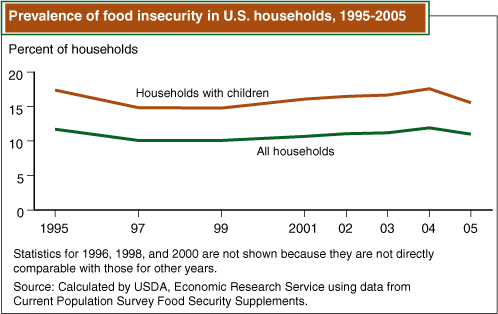In The Long Run
- by Mark Nord
- 5/1/2007
Fewer households had difficulty putting enough food on the table in 2005
The prevalence of food insecurity—the lack of consistent access to adequate food for active, healthy living—in U.S. households declined in the late 1990s, then increased following the recession in 2001. Food insecurity continued to increase through 2004, in spite of renewed economic growth, then declined by about one percentage point to 11.0 percent in 2005. The prevalence of food insecurity for households with children was about 5 percentage points higher than the national average, and followed a similar pattern over the past decade.


